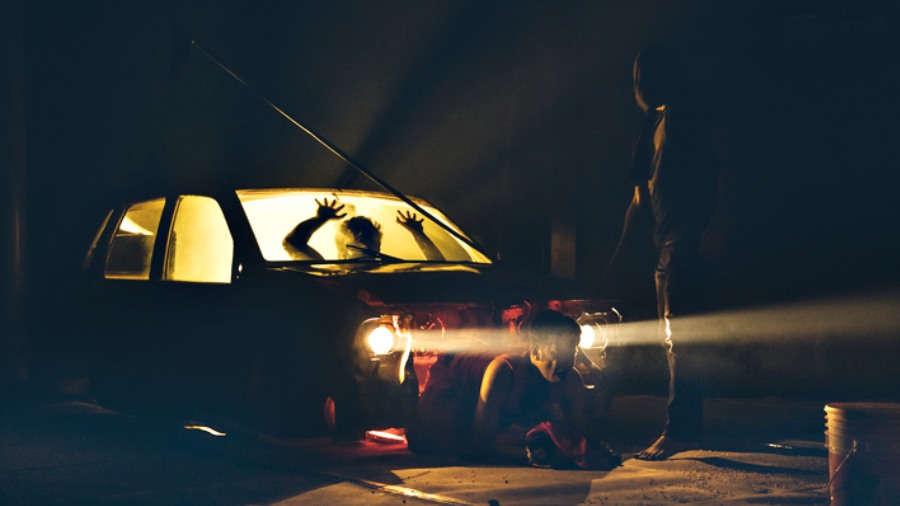Ravan Reloaded, a theatrical piece directed by Debasish Ray, is worth watching and discussing for its astounding design and interesting take on the myth of Ravana. Much like a picaresque novel, the play traces the journey of the protagonist from a pristine rural space to a monstrous city. The city, as fantasy and fatality, is appealing, aspirational, ecstatic and debilitating. The plot follows a Dickensian arc in shaping the character of Ravana.
Although the storyline might appear hackneyed, the opening premise presents an irreconcilable conflict. A father, an ardent actor of a Ramlila troupe, staunchly disapproves of his son’s admiration for popular Bollywood heroes. The performances touch an intense dramatic apex in an unexpected tussle between father and son regarding what it takes to be a successful actor. But this poignant collision between two different ideological worlds across an aspirational divide somehow fizzles out. After this, the play makes a winding detour.
Ravan Reloaded is remarkable in its stage design. The journey of the protagonist shifts through multiple psychological and physical spaces. All the spatial tropes manifest through a decrepit garage set up with abandoned and damaged vehicles and objects. The distraught texture of the space reveals nuanced symbolic registers as the protagonist makes his journey from adolescent naivety to desirous adulthood.
The piece also offers an innovative light design in the way in which the source lights are embedded within the set. The lights are visible and they craft the scenes with a clear intent of starkness, docility, eroticism and heroism. The play, staged in an indoor amphitheatre at the Kolkata Centre for Creativity, opened up possibilities of an intimate experience at the onset. However, as a viewer, I felt that the space was refashioned to provide for the absence of a proscenium. The pitch of performances, albeit powerful, demanded the distance of a proscenium. In future shows, it might be interesting to see if the design is made to talk to the dynamics of an intimate space.










